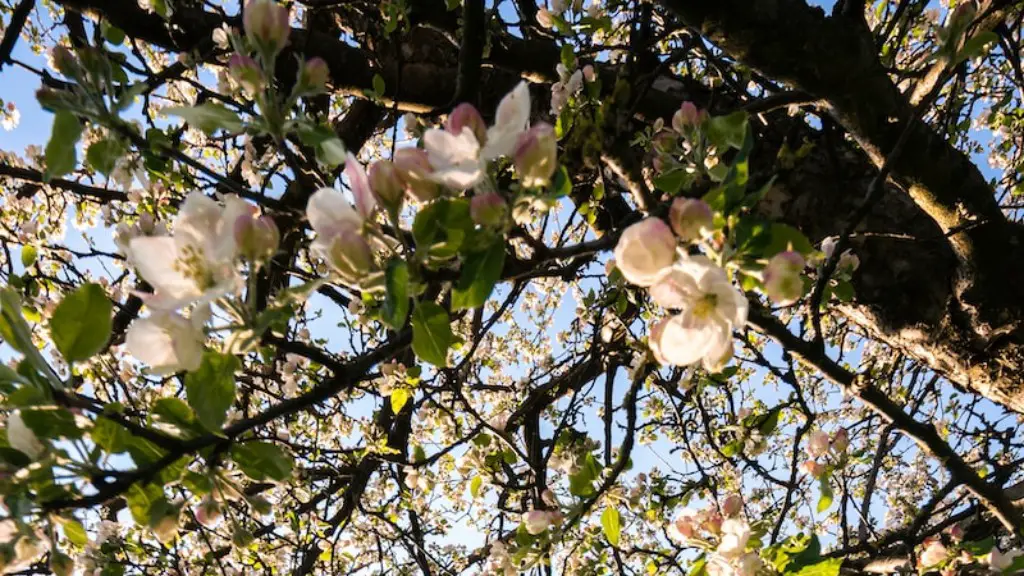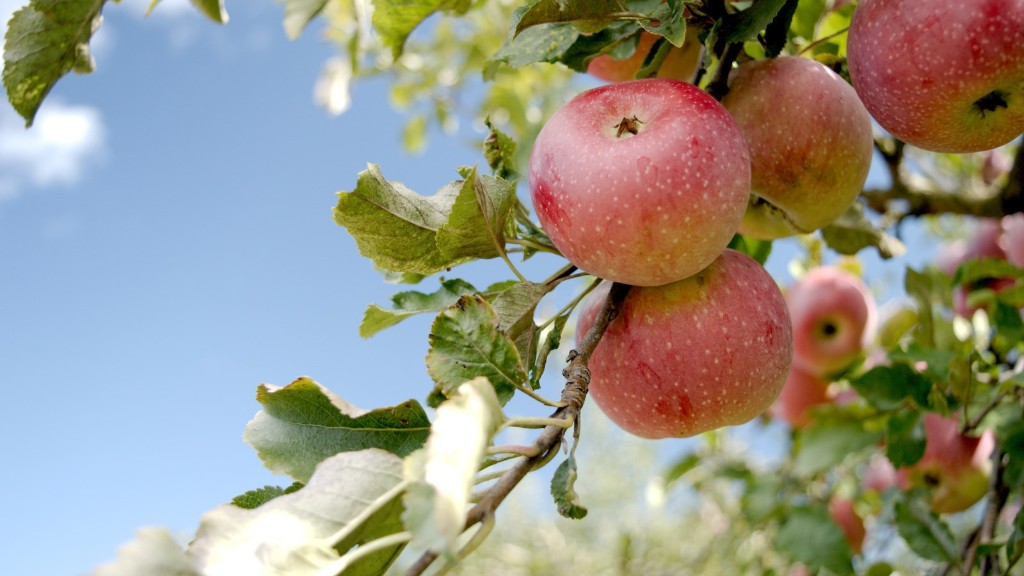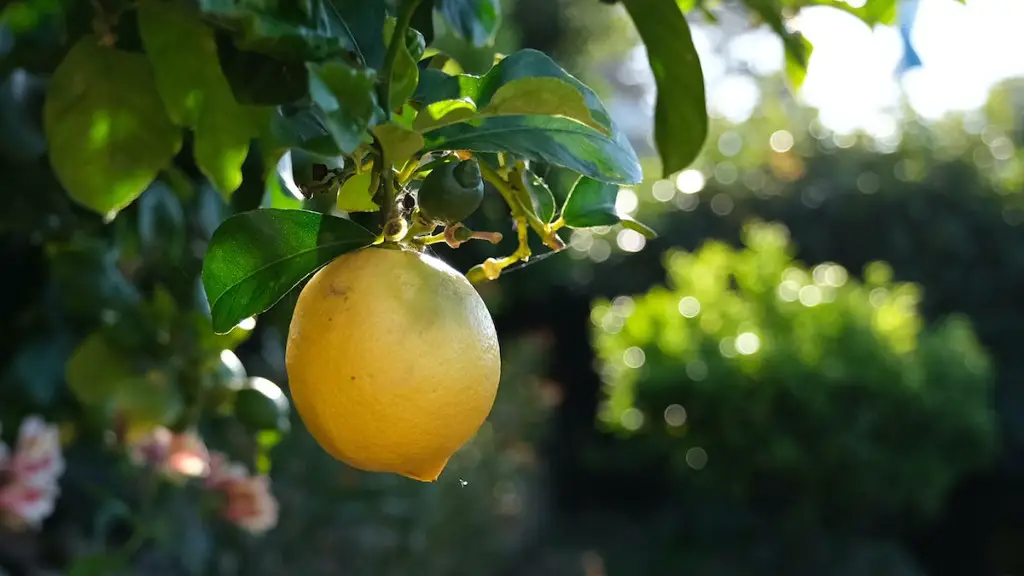When it comes to learning how to care for a lemon tree sapling, there are few things that need to be taken into consideration. Proper watering, pruning, fertilizing and soil pH management are essential for the growth and quality of the lemon tree. Here are some tips on how to properly care for your lemon tree sapling.
Watering is key to any sapling’s development so it’s important to supply your sapling with enough water. During the initial 2 – 3 months after its establishment, it is essential to water every other day. As time progresses and the sapling begins to bear more leaves, water every 3 – 4 days. The aim is to make sure the sapling’s soil is moist not soaked.
Pruning is essential to balance a lemon tree’s growth. During the sapling’s early stages, prune its main branch at the 3rd node and the lateral branches at the 2nd node. Do this by removing the leaves at the growing tips of the branches. However, once the tree begins to bear fruits, thinning the branches is more effective to maintain the desired quality.
Fertilizing is also essential for the sapling to develop. Too little fertilizer can lead to poor growth, whereas too much can build up and eventually lead to undesired growth. Organic fertilizer or manure can be used at the beginning, however controlled-release formula fertilizer should be used once the tree matures.
It is also important to monitor the soil’s pH levels to provide the sapling with ideal growing conditions. If the soil pH is around 6.5 -7.5, then the tree is more likely to develop more fruit than if the pH adjust is either too low or too high. Lime can be used if the pH levels adjust is too acidic, whereas sulfur can be used to lower the pH levels.
Re-potting
Re-potting is necessary when a sapling increases its size. Depending on the variety of sapling and its saturation level, a larger pot should be used every two to three years. The roots should be given additional space to spread and for the sapling to reach its ideal size. Starting from a 5-inch pot, move up to a 7-inch and a 10-inch pot as time progresses.
Re-potting should be supplemented with soil that is free of stones, grass, weeds and of course, pests. A mix of potting soil and sand should be sufficient, providing the sapling with adequate drainage and aeration while supplying it with nutrients.
When selecting a pot, always check to make sure it has drainage holes at the bottom. This will prevent water clogging, as well as, root saturation and general rotting.
Sun Exposure
It is important to place the sapling in an area where it can receive adequate sunlight. Generally, lemon trees require 4 to 6 hours of sunlight, so try to locate the sapling at an area that is exposed to the sun for this amount of time.
If temperatures are extremely high, try to find a partial shade for the sapling. Consider using a shade cloth, this will not only provide the sapling with insulation from direct sunlight, but it will also reduce the water loss from wind.
During winter, lemon trees can generally withstand temperatures between freezing point and 30ºF. However, it is recommended to cover the sapling with a blanket to protect it from frost-induced damage.
When it comes to watering the sapling in winter, water it only if the soil is dry. Excessive watering during winter can cause root clogging and increase the chances of root rotting.
Pests and Diseases
Pests and diseases can inflict a high amount of damage to a lemon tree sapling and should be controlled as soon as they are detected. Keep an eye out for signs of insects, fungi, bacteria, molds and nematodes. Common pests include spider mites, scale and aphids.
Insects can be managed through organic treatments such as liquid garlic extracts, orange oil and insecticidal soap. Try to identify the pest and treat it accordingly, as some treatments can be more devastating than beneficial.
Fungi, bacteria and molds can affect the sapling’s root system, so preventing them from spreading and damaging the sapling is very important. Treating it with a fungicide or copper sulfate should prevent them from flourishing.
Nematodes can feed off the sapling’s root system, leading to a weakened and low quality sapling. Treat the soil with beneficial nematodes, this will reduce the number of nematodes in the area and protect the sapling.
Harvesting
When the sapling matures and its fruits are ready to be harvested, use a pair of clippers and snip the fruits off the branches. Be careful not to damage the tree’s structure and ensure the fruits are completely ripened.
Harvesting the fruits in late fall or winter is ideal for area with frost and temperatures in the 30s or lower. Harvests done in this period will generally produce better qualities and bigger yields.
During the summer, optimal harvesting temperatures should be around 95 to 140 degrees Fahrenheit. Overripe or softened fruits in summer should be harvested with special care not to cause any physical damage.
Finally, make sure you protected the sapling from frost and prolonged temperatures lower than freezing point.
Pollination
Pollination is the process by which pollen is transferred to young fruits, resulting in flower production and fruit yield. Several pollinators such as bees, hummingbirds and moths contribute to a lemon tree sapling’s pollination.
In order to make sure the process of pollination is feasible, always keep an eye out for the pollinators and try to encourage them to stay around with the help of flowering plants and honeydews. You can even practice manual pollination for better results.
Layout several 2-inch wide white strips of cloth close to the lemon tree sapling every few inches. As the bees and hummingbirds move around the sapling, they will pick up the pollen and spread it across the area, enhancing the process of pollination.
Another thing to consider when doing manual pollination is to select the right clothes. Clothes that are light-colored will encourage pollinators to move around the sapling while avoiding dark colored ones.
For better pollination, try to practice pollination early in the morning because pollinator activity increases during this time. Also, make sure to avoid windy days, as the wind will disperse the pollen grains, reducing the chances of successful pollination.
Frost Protection
Protecting the sapling from frost and extreme temperature conditions is essential for the sapling’s development. The ideal temperature for a sapling should range from 23 to 30 degrees Fahrenheit for mature saplings and 40 to 50 degrees Fahrenheit for young saplings.
During prolonged and extreme temperature adjustments, try to place a towel or blanket over the sapling in order to protect it from the frost. If it’s too cold, try to cover the sapling with a cloth even during the day. Before the sun rises, remove the cloth and uncover the sapling.
A layer of mulch such as dead leaves, fruit peels and grass can help keep moisture in the soil and protect it from frost and other extreme weather conditions. Would also help discourage weeds to grow and maintain fruits health.
If the lemon sapling has just developed and still hasn’t produced any leaves, it is more prone to frost damage. Make sure to provide the sapling with sufficient protection and keep it away from winds and cold areas.
Finally, if the sapling suffers from frost damage, make sure to prune it back and keep an eye out for pests. In case there is too much damage, it is recommended to replant the sapling and start over.





